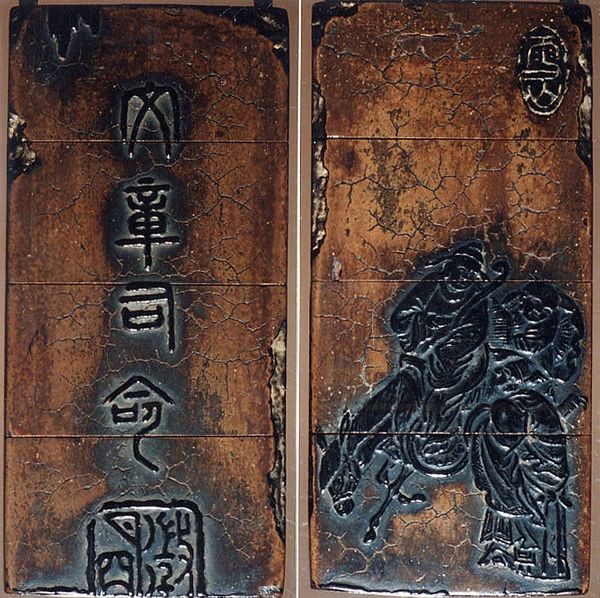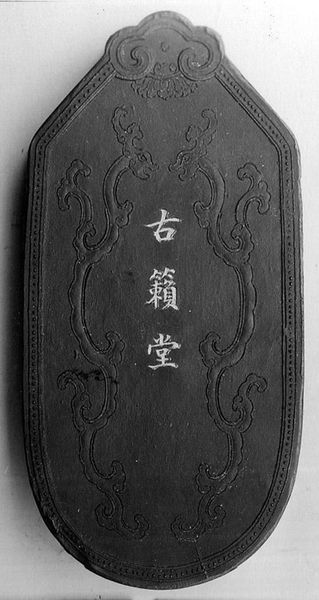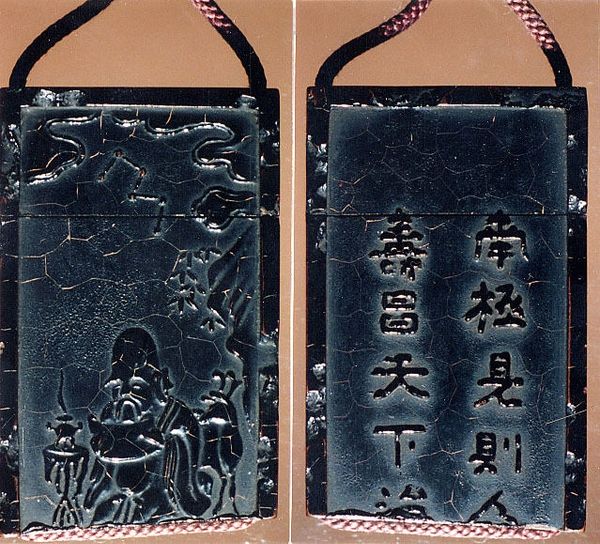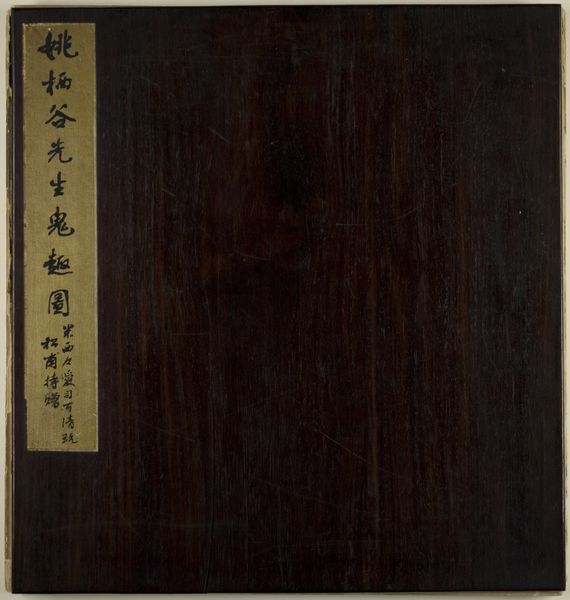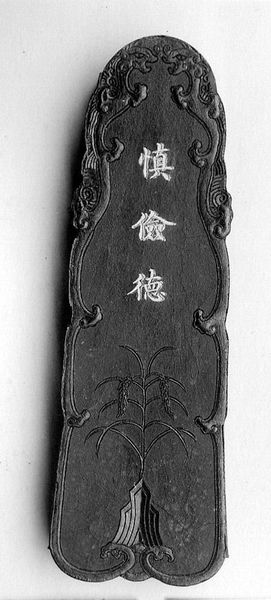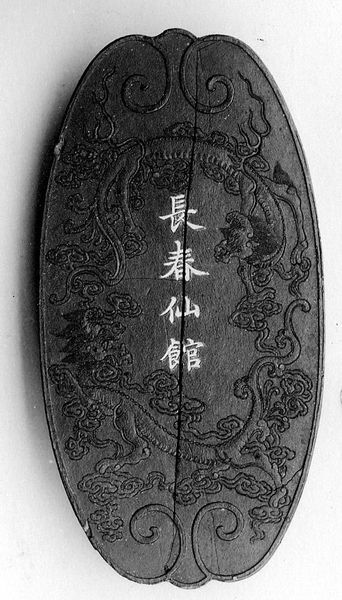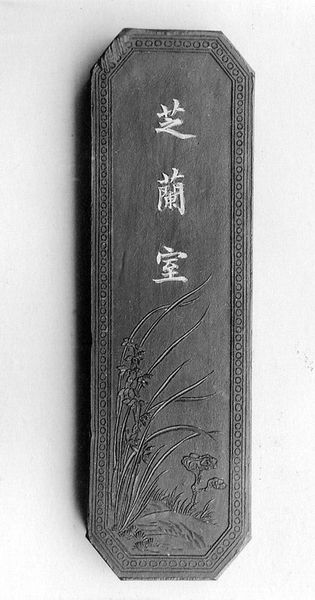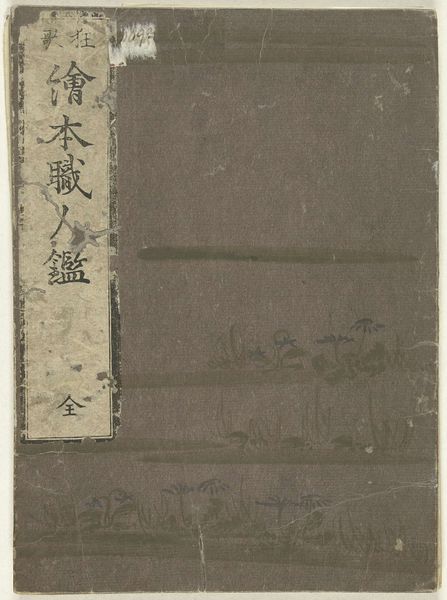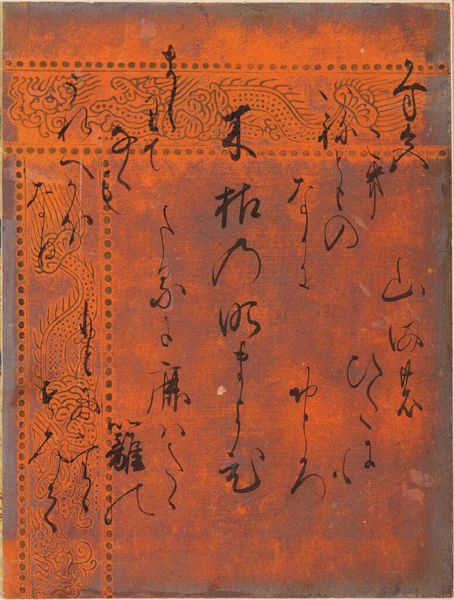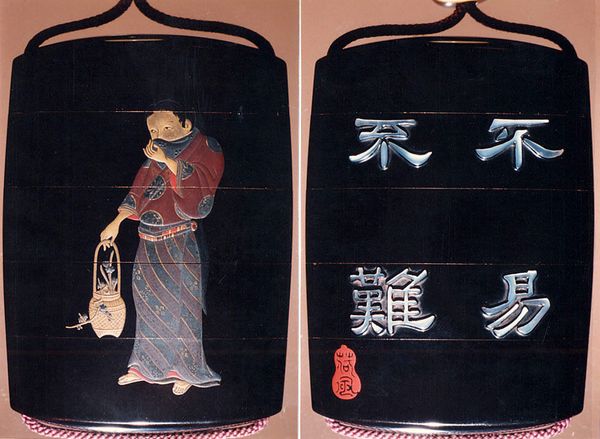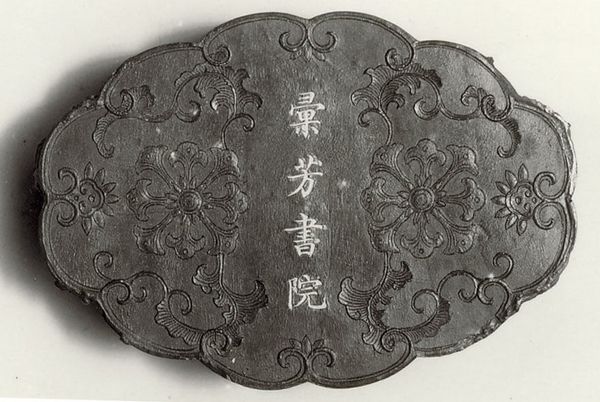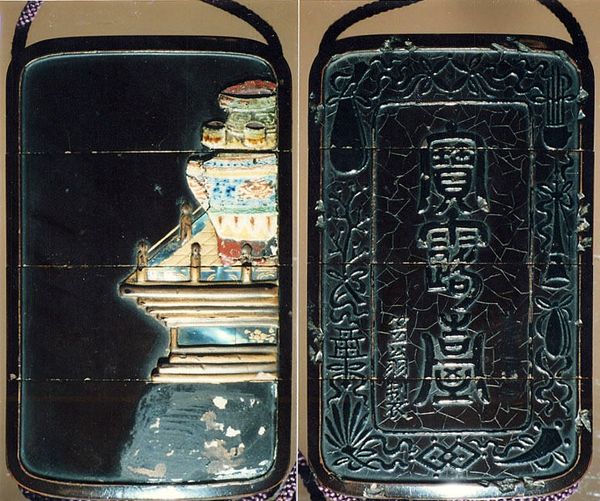
Case (Inrō) with Design of Flowering Peonies 18th - 19th century
0:00
0:00
carving, sculpture, wood
#
carving
#
sculpture
#
asian-art
#
geometric
#
sculpture
#
orientalism
#
wood
#
decorative-art
Dimensions: 3 11/16 x 1 7/8 x 1 1/16 in. (9.4 x 4.8 x 2.7 cm)
Copyright: Public Domain
Curator: Well, here we have a particularly interesting example of a late Edo-period inrō, dating to the 18th or 19th century, attributed to Kano Seisen'in. Editor: It looks almost like a dark monolith at first glance! Then, slowly, you see these flowers emerging. The darkness feels very absolute, but they're rendered with such fine detail, it's striking. Curator: Yes, and think about the purpose: this "Case (Inrō) with Design of Flowering Peonies," was designed to carry seals or medicine. Editor: So, everyday items elevated. But also, who had access to this level of artistry? Was this solely for a wealthy elite, or did a wider artisan class circulate around these creations? Curator: Good questions. Inrō production involved a network of artisans. This particular piece, made from carved wood, likely required multiple specialists. Editor: Right, because look at the precision—those peonies are masterfully done, capturing the texture of the petals in relief against that slick black surface. What kind of tools did they have? Were they inventing tools for this kind of detail? Curator: Likely tools specifically made for detailed wood carving. And thinking about its decorative qualities – what kind of consumer is commissioning a piece like this? Someone who wanted a blend of practicality and high art. Inrō became signs of status, evolving from utilitarian objects to fashion statements within the merchant and samurai classes. Editor: Did the rigid class structures influence the designs, dictating acceptable motifs, or did artists have the freedom to innovate and express? Also, how did collecting and displaying inrō play into shaping identity and projecting social standing in Japan? Curator: Scholars explore that very point when tracing inrō from practical containers to collectible art. The material tells us a lot about consumer culture back then. Editor: Definitely! This tiny little thing reflects a whole world! From material access to artisanal networks to the art market and socio-political messages, the layers never end! Curator: Exactly. A deceptively small object opens to a complex history of production, consumption, and cultural values.
Comments
No comments
Be the first to comment and join the conversation on the ultimate creative platform.
